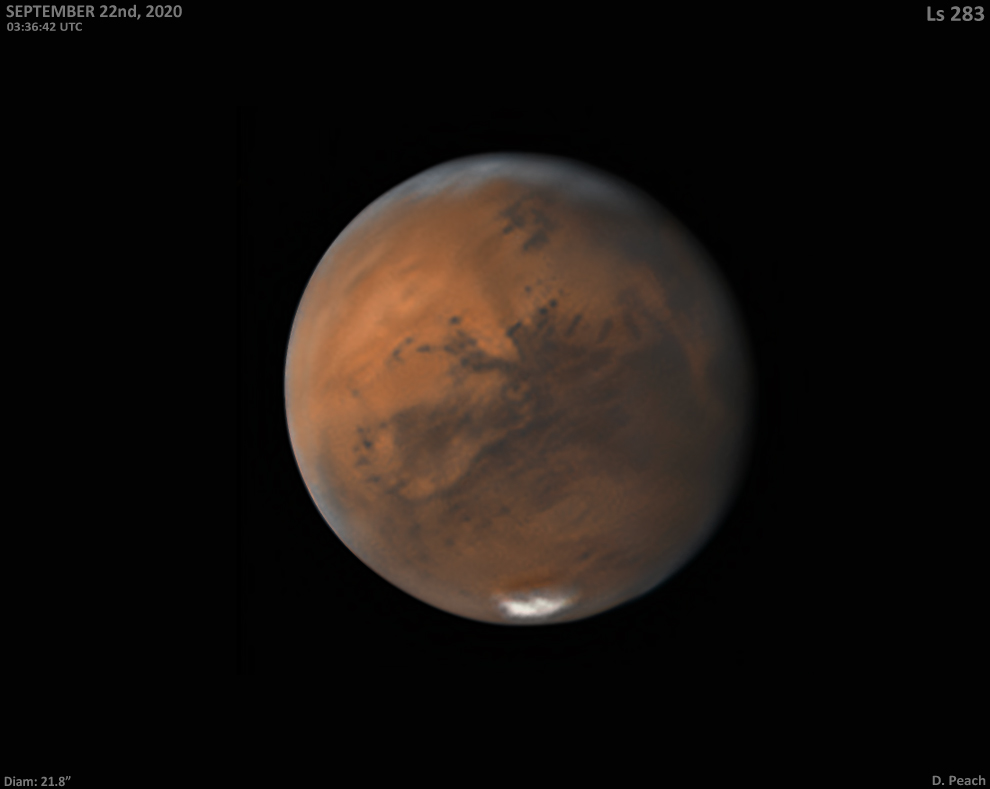2020年10月1日
Solis Lacus: The Eye of Mars
Image Credit & Copyright: Damian Peach
Explanation: As telescopes around planet Earth watch, Mars is growing brighter in night skies, approaching its 2020 opposition on October 13. Mars looks like its watching too in this view of the Red Planet from September 22. Mars’ disk is already near its maximum apparent size for earthbound telescopes, less than 1/80th the apparent diameter of a Full Moon. The seasonally shrinking south polar cap is at the bottom and hazy northern clouds are at the top. A circular, dark albedo feature, Solis Lacus (Lake of the Sun), is just below and left of disk center. Surrounded by a light area south of Valles Marineris, Solis Lacus looks like a planet-sized pupil, famously known as The Eye of Mars . Near the turn of the 20th century, astronomer and avid Mars watcher Percival Lowell associated the Eye of Mars with a conjunction of canals he charted in his drawings of the Red Planet. Broad, visible changes in the size and shape of the Eye of Mars are now understood from high resolution surface images to be due to dust transported by winds in the thin Martian atmosphere.
October 1 Mid-Atlantic Spaceport Launch: How to Watch
Tomorrow’s picture: harvest moon
太阳湖:火星之眼
影像提供与版权: Damian Peach
说明: 在地球各地的望远镜注目之下,将在10月13日运行到2020年火星冲的火星,在夜空中变得越来越明亮。而在这幅摄于9月22日的影像里,火星看来也在凝视我们。对地基的望远镜来说,火星目前的盘面,已经很接它的最大张角,只比满月视宽度的1/80要略小一些。火星会发生季节性变化的南极冠,位在影像下端,顶端则是雾霾笼罩的北极区。在火星盘面中心左下方的暗色低反照率区为太阳湖(或称索利斯湖),因为乍看像一只行星规模的眼睛,而有火星之眼的昵称。它周围的淡色区,则是水手峡谷的南段。在20世纪初,天文学家兼狂热的火星观测者洛威尔,在描绘火星的表面时,把太阳之眼和想像的运河网接在一起。经由分析高解析的火星表面影像,如今我们知道火星之眼在视觉上的宽度和形状变化,是受到稀薄火星大气中的风飘沙尘之影响。(Solis Lacus 太阳湖、索利斯湖)
10月1日中大西洋太空港发射:如何观看
明日的图片: harvest moon







